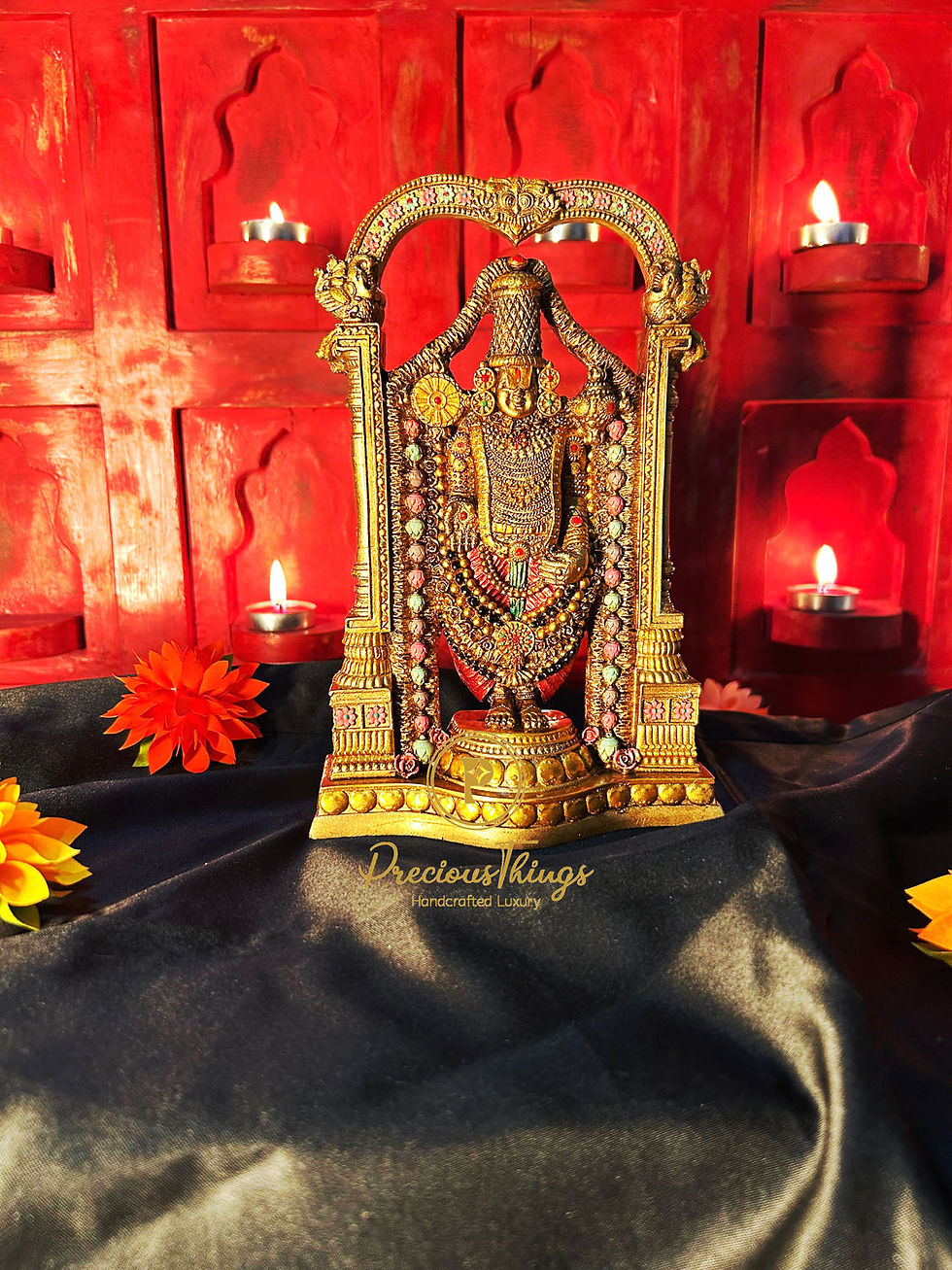A Venkateswara Swami Thanjavur Painting typically depicts the Hindu deity Vishnu, specifically in his form as Venkateswara or Balaji, revered in the Tirumala Venkateswara Temple in Tirupati, Andhra Pradesh, India. These paintings are characterized by rich colors, intricate details, and embellishments like gold foil, precious stones, and pearls. Lord Venkateswara is usually depicted standing or sitting majestically, adorned with royal attire and jewelry, with a serene and benevolent expression. The background often features scenes from Hindu mythology or motifs such as lotus flowers and peacocks, adding to the overall opulence and divine aura of the painting.
Venkateswara Swami Thanjavur Painting
Thanjavur painting is a classical South Indian painting style, which was inaugurated from the town of Thanjavur (anglicized as Tanjore) in Tamil Nadu. The art form draws its immediate resources and inspiration from way back about 1600 AD, a period when the Nayakas of Thanjavur under the suzerainty of the Vijayanagara Rayas encouraged art—chiefly, classical dance and music—as well as literature, both in Telugu and Tamil and painting of chiefly Hindu religious subjects in temples. It is distinguished by their rich and vivid colors, simple iconic composition, glittering gold foils overlaid on delicate but extensive gesso work and inlay of glass beads and pieces or very rarely precious and semi-precious gems. They essentially symbolize ancient themes of traditional gods and goddesses.

















